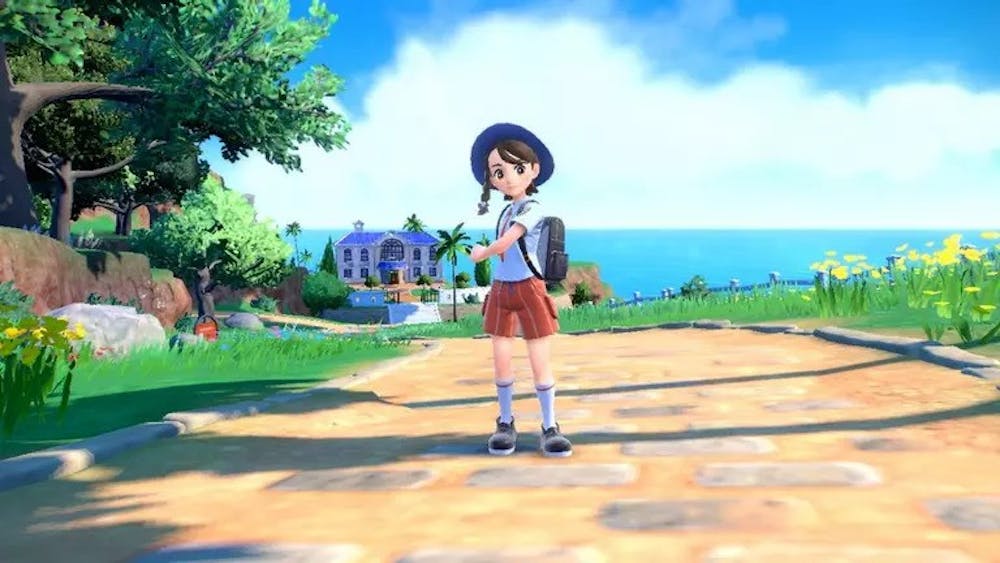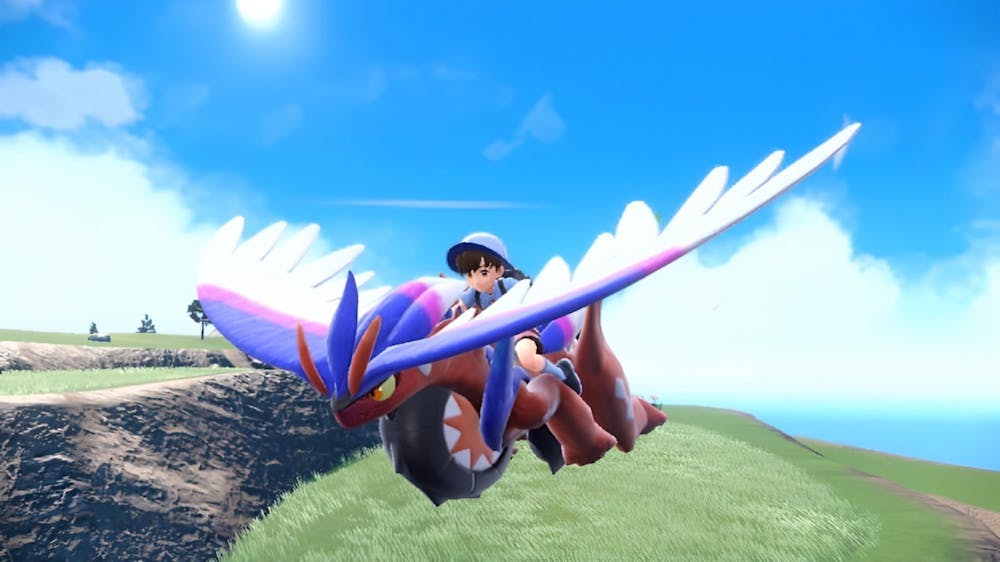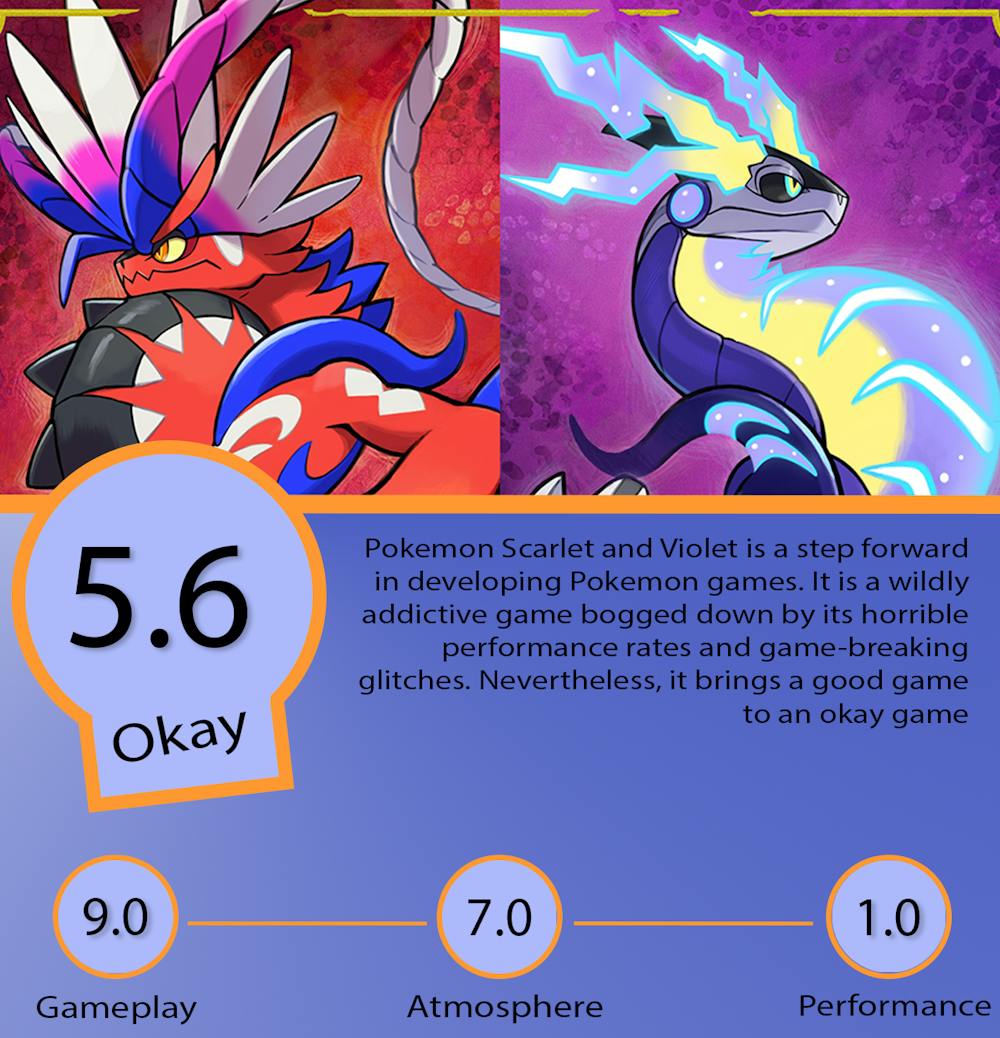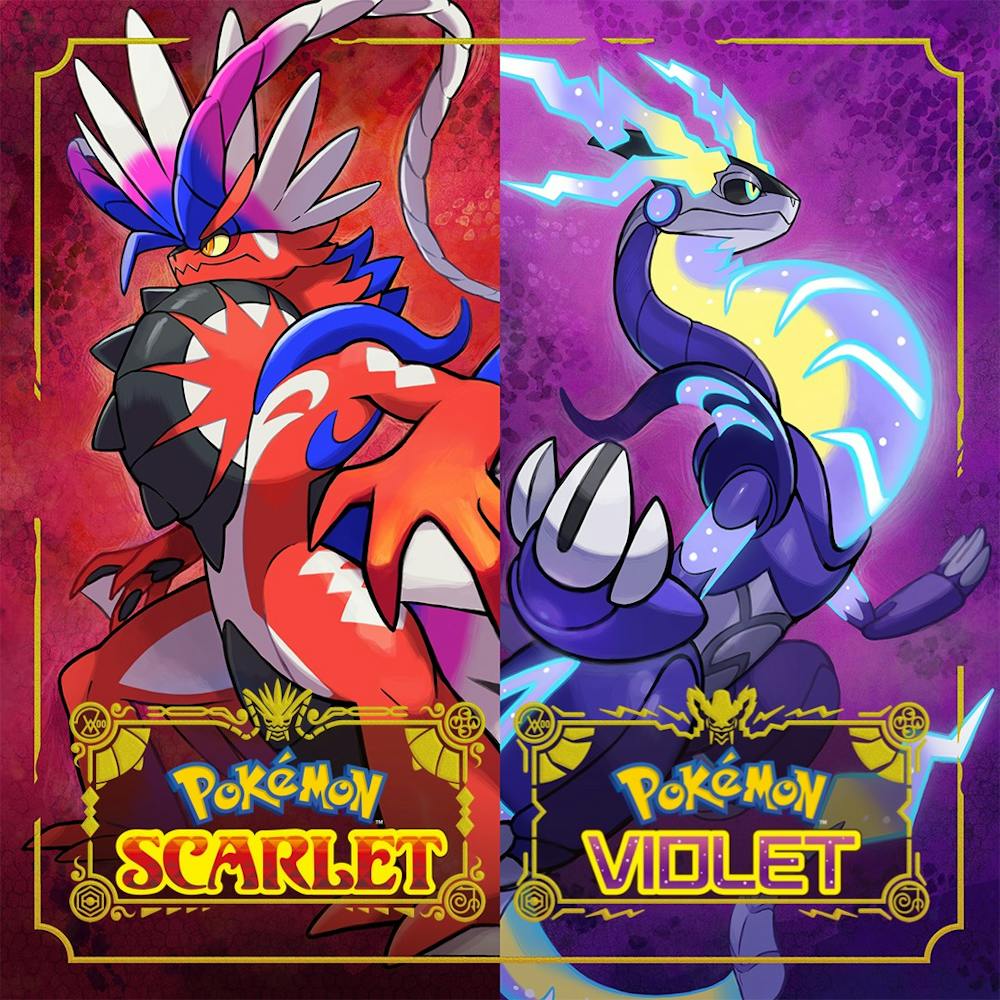Note: I played Pokemon Scarlet for the Nintendo Switch for this review. I played with a physical cartridge, all handheld.
Pokémon Scarlet and Violet are the latest traditional games released since Sword and Shield on Nov. 15, 2019. Not only that, they are the first open-world traditional-styled games, which means the process of going around a world to catch as many Pokémon as possible and become champion of the region, as well as taking elements from Pokémon: Legends Arceus that came out at the beginning of this year. When I first saw the first trailer of the game from the Pokémon Presents Presentation, I was ecstatic to get not only a new Pokémon game but one that makes way for a new generation, generation nine. I've been playing Pokémon since gen. five, which included Pokémon Black and White and their sequel games, Black and White 2. I fell in love with the gameplay, the music, the story, the characters, and the atmosphere. I have been playing every subsequent game to come out since. Once the game was revealed, I wondered what new Pokémon would be added, if there would be gym leaders, and if so, what their typings would be, what region this game would be set in, etc. After months of waiting and teasers for the game, I got my game the day it was released from preordering and played it a ton over the week. How do these games fare to other Pokémon titles?
Gardevoir-Like Gameplay
Like every other traditional Pokémon game, you can expect the same battling gameplay for the most part. Bump into a pokémon and then faint, then using the many moves your Pokémon has, keeping type advantages in mind, or get their health super low so you can try to catch them using one of your many poké balls.

The newest gameplay to be introduced is auto-battle, where you press the ZR button to have your Pokémon follow you around. If you get close to a Pokémon and they are not too high of a level, your Pokémon will run up to them and defeat them like a regular Pokémon battle with the caveat of getting less EXP than you would if you manually fought them. This gameplay is used primarily in one of the four story routes in the game. I like this new gameplay element as it makes grinding levels much more leisurely and less time-consuming than typical RPGs. Regarding my previous statement of "one of four routes," yes, instead of having one traditional story in Pokémon, you have four, which include "Victory Road," which is the standard mission of collecting all eight gym badges from the leaders after completing their respective gym trials of Paldea to get access to the Pokémon League to defeat the Elite Four and Champion and gain the champion title. The second is "Path of Legends," where you go around Paldea looking for five titan Pokémon to beat to find the Mystica Herbs needed to help Arven with his sweet and sorrowful mission. Finally there is "Starfall Street," where you assist Casseopia in taking out the many bases of "Team Star," who are rebel students of Naranja and Uva Academy (Scarlet and Violet respectively depending on the version of the game your playing) acting as the villainous group in the game. My favorite was "Victory Road," as I loved roaming the map collecting every Pokémon to build a team suitable for any advantage I went up against. You can do every mission in these stories whenever you want, but there isn't any level scaling, so while you can technically do anything in any order you'll like, it'll be hard to do. Overall, I like how the open-world aspect gives you a sense of freedom. I myself have always enjoyed going to places that you technically aren't supposed to be at, whether it be an inaccessible area or the levels in that area are too high. After completing each story, you'll unlock the true final story of the game, where you'll discover the final mysteries of Paldea and conclude what I believe to be one of the best stories in a Pokémon game.
This is the first Pokémon game to have multiplayer functionality in the sense you can walk around the world with friends or anyone else in the world. I never had the chance to play with friends, so I have nothing to say. Unlike curry of Pokémon Sword and Shield, sandwiches can be made to gain temporary status boosts such as a power boost for a short time or an encounter boost to make it easier to catch specific Pokémon. I like how accessible the ingredients required for the different sandwich recipes are to find so you can make food in order to create an extra status boost in a decent amount of time. I like how you can boost Pokémon stats in more ways than one, unlike previous entries of Pokémon, where you don't encounter your legendary Pokémon until the final bit of the game, you get your legendary Koraidon (Scarlet) and Miraidon (Violet) at the beginning of the game to use as transportation.

Completing "Path of Legends" will get you new abilities for your Pokémon, such as a high jump ability to glide, dash, swim, and climb to traverse the massive world of Paldea much easier. I thought locking these abilities behind story progression limits the game's premise of letting you do anything in any order you want. The two final gameplay elements I'd like to talk about are the classes you can attend and the introduction to terastallization and their raid battles. Like the Persona games, the player can attend classes at their protagonist's university. Attending multiple classes and scoring well on each class's respective midterm and final will help you grow a stronger bond with your teacher, much like Persona. These open up some sidequests, such as finding and capturing the four "ruinous" Pokémon and getting rewards for filling out your Pokédex. Terastallization is Scarlet and Violet's form of "gigantimaxing." This process will cause a Pokémon to either become sturdier or stronger or change their typing entirely, which makes strategizing harder and much more fun when it comes to Pokémon battles. You, with a group of friends or alone, can enter caves and face off against terastallized Pokémon in hopes of defeating them to have the chance of capturing them. I really liked terastallization and thought it brought new mechanics into the gameplay that never slogged the experience at any point. It also gave essential battles more of a challenge as every plot-related battle would have one Pokémon that would become terastallized.
Atmosphere, as amazing as the Taste of the Aspear Berry
The Paldean Region is supposed to represent Spain. From beachside cities to cavernous rocky terrain, grassy meadows, and snowy mountain peaks, the region encapsulates many different parts of Spain. The characters in the game each have their distinct personalities. Everyone makes the world feel much more alive, from teachers, rivals, professors, gym leaders, and villain admins to something as little as the NPCs. The music also helps a ton. Game Freak has always made superb music, and the "Team Star" grunt theme is one of the most upbeat themes I've heard in a while, and the gym leader battle music with the chanting in the background makes it feel like people are cheering for your victory. The final boss of the game also has a super fantastic theme. It creates the feeling of suspense as you fight someone involved in one of the most shocking plot twists in any Pokémon game to come up as of yet.
Low-Health Performance/Graphics
One of the major issues of these games is performance issues. Scarlet and Violet are a buggy mess. It is by far the worst-performing Pokémon game that has been released. There are glitches galore, with the frame rate stuttering whenever too much stuff is on the screen. I can't tell you how many students looked like they were walking at the speed of presentation slides. Also, sometimes NPCs would walk through battles you were having with other people in the game. There were even more glitches encountered during my journey through Paldea, like clipping out of bounds in areas where you can't get out or glitches where your player character contorts their bodies in many creepy ways, especially when using camera mode. The first trailer was released in January of this year and the game was released the same year. I could tell this was a rush job on Game Freak's part, and more time should've been put into resolving these performance issues before the game came out. The graphics are as expected for a switch game; not bad, but not good either. Graphic issues have never affected me much though, as long as a game is fun, I can overlook bad graphics. They don't make the game unplayable like some of the glitches present in the game. Hopefully, a patch will soon be released that fixes some game-breaking bugs.
Overall, I had a fun time playing 40 hours of Pokémon Scarlet and Violet. The gameplay was nostalgic but also fresh, and the atmosphere and open-world aspect of the game was fun. The performance issues were, however, abysmal, and the glitches in the game made it frustrating to complete the games at times. I had to save every so often in case I encountered a glitch that soft-locked me. If you like Pokémon, please play it but ensure you have a tolerance for glitches.

Sources:
Pokemonarceus, Blackandwhite2, Blackandwhite, Scarletviolet, Game Freak, Swordandshield
Photos:
ScarletViolet, Gameinformer, GameStop
Contact Cameron Tyo with comments at @cttyobsu.edu or @tyocameron on Instagram.




















